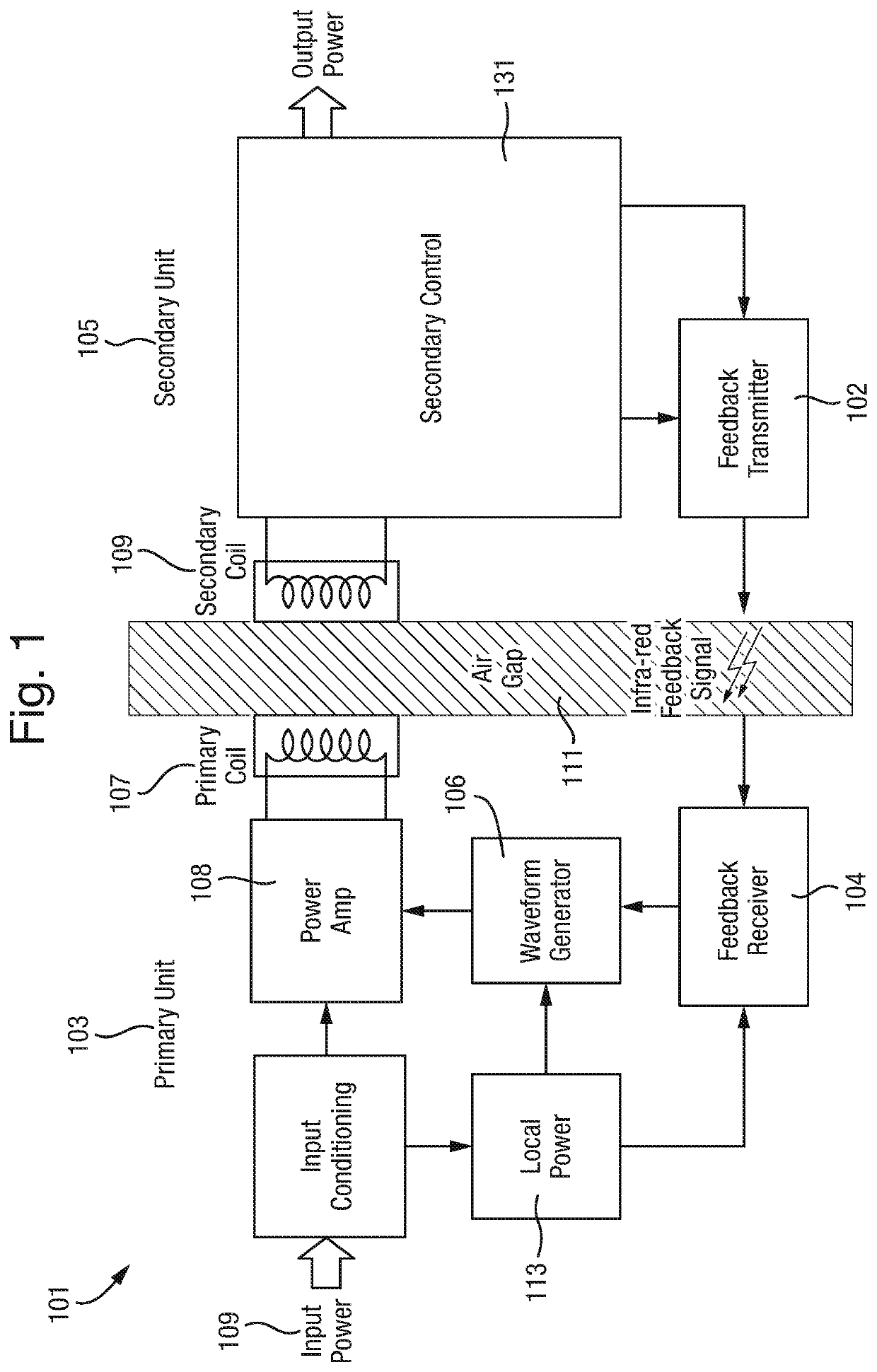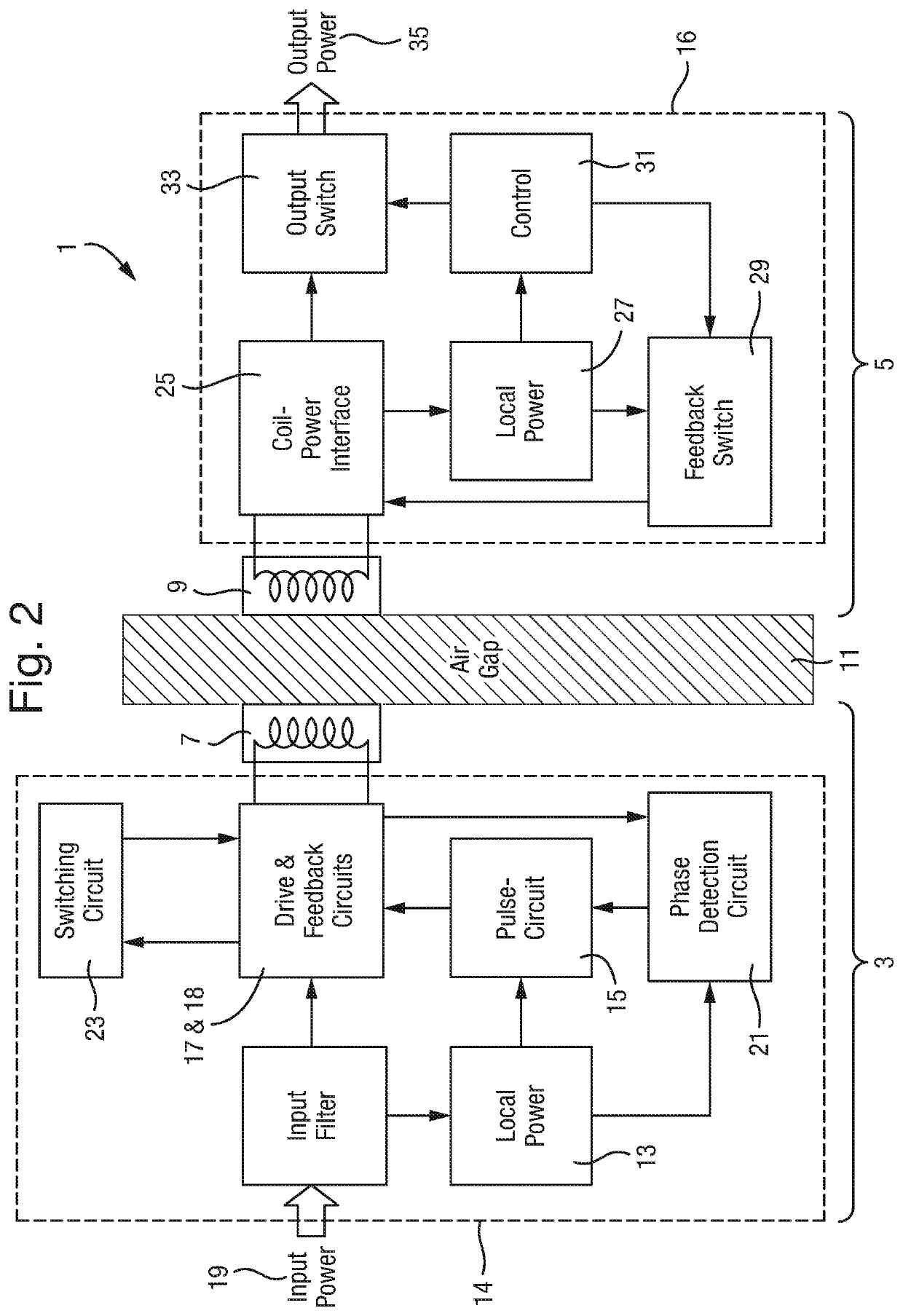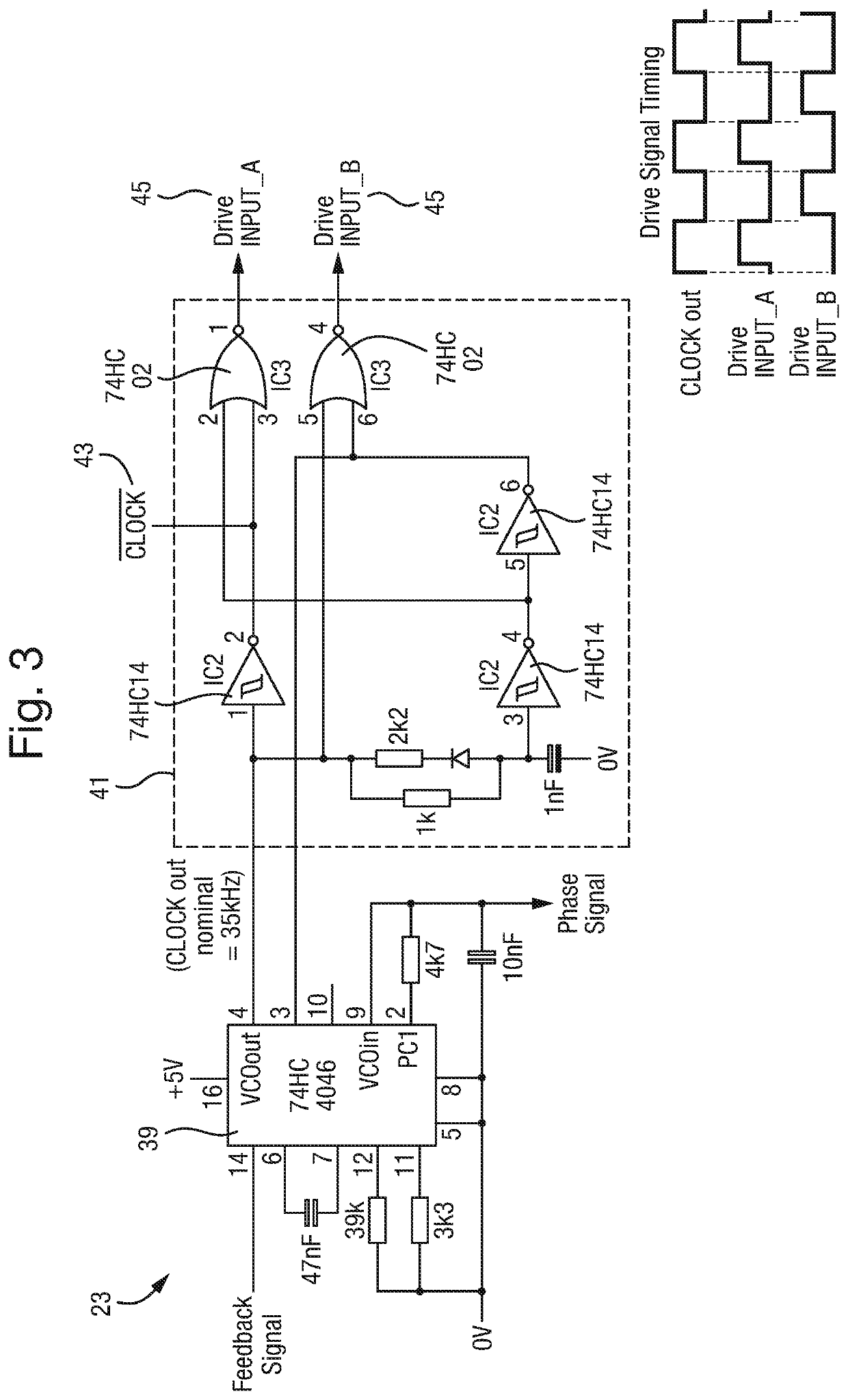Inductive power transfer system
a power transfer system and inductive power technology, applied in the direction of exchanging data chargers, circuit arrangements, electrical equipment, etc., can solve the problems of complex connector extraction mechanisms or explosive charges, damage to vehicle systems, and potential problems in environments, so as to achieve faster and more accurate response, reduce errors, and reduce complexity
- Summary
- Abstract
- Description
- Claims
- Application Information
AI Technical Summary
Benefits of technology
Problems solved by technology
Method used
Image
Examples
Embodiment Construction
High-Level Function
[0050]The present invention is an improvement of the inductive power transfer system disclosed in WO2008 / 017818A1 “the example prior art” (FIG. 1).
[0051]The example prior art inductive power transfer system 101 is designed for use in an aircraft environment. It has a primary power transmitting coil 107 and a secondary power receiving coil 109 separated by an air gap 111. The air gap 111 can be varied between 1mm and 10mm, depending on the physical size of the power transformer and the quantity of power to be transferred.
[0052]The system 101 comprises primary unit components coupled to the primary coil 107 and secondary unit components coupled to the secondary coil 109, with a feedback transmitter 102 and receiver 104 to feed a signal from the secondary unit 105 to the primary unit 103.
[0053]The primary unit 103 includes a single phase or 3-phase alternating current, or direct current power input. The primary unit 103 is carried by the host aircraft (not shown) whi...
PUM
 Login to View More
Login to View More Abstract
Description
Claims
Application Information
 Login to View More
Login to View More - R&D
- Intellectual Property
- Life Sciences
- Materials
- Tech Scout
- Unparalleled Data Quality
- Higher Quality Content
- 60% Fewer Hallucinations
Browse by: Latest US Patents, China's latest patents, Technical Efficacy Thesaurus, Application Domain, Technology Topic, Popular Technical Reports.
© 2025 PatSnap. All rights reserved.Legal|Privacy policy|Modern Slavery Act Transparency Statement|Sitemap|About US| Contact US: help@patsnap.com



